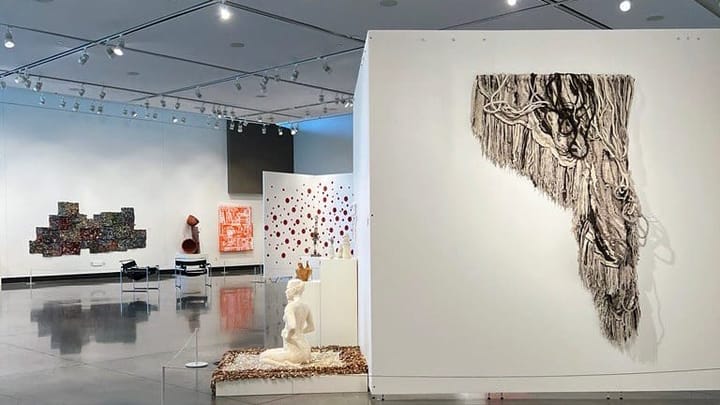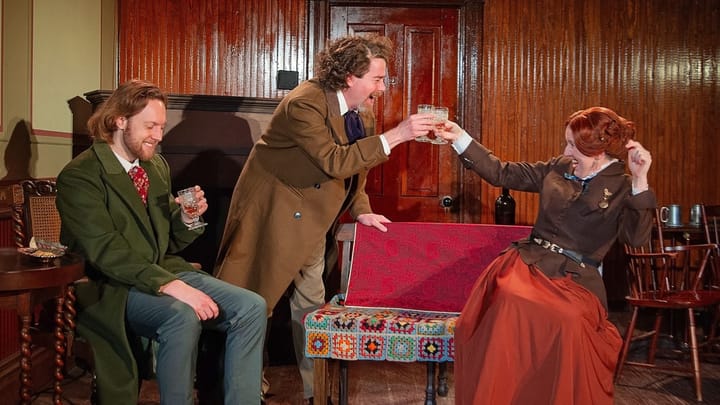Much ado about something at Kechi Playhouse
Shakespeare debuts at the 42-year-old theater with a quick and lively “Much Ado About Nothing.” Three cheers to the Bard — and to this production.
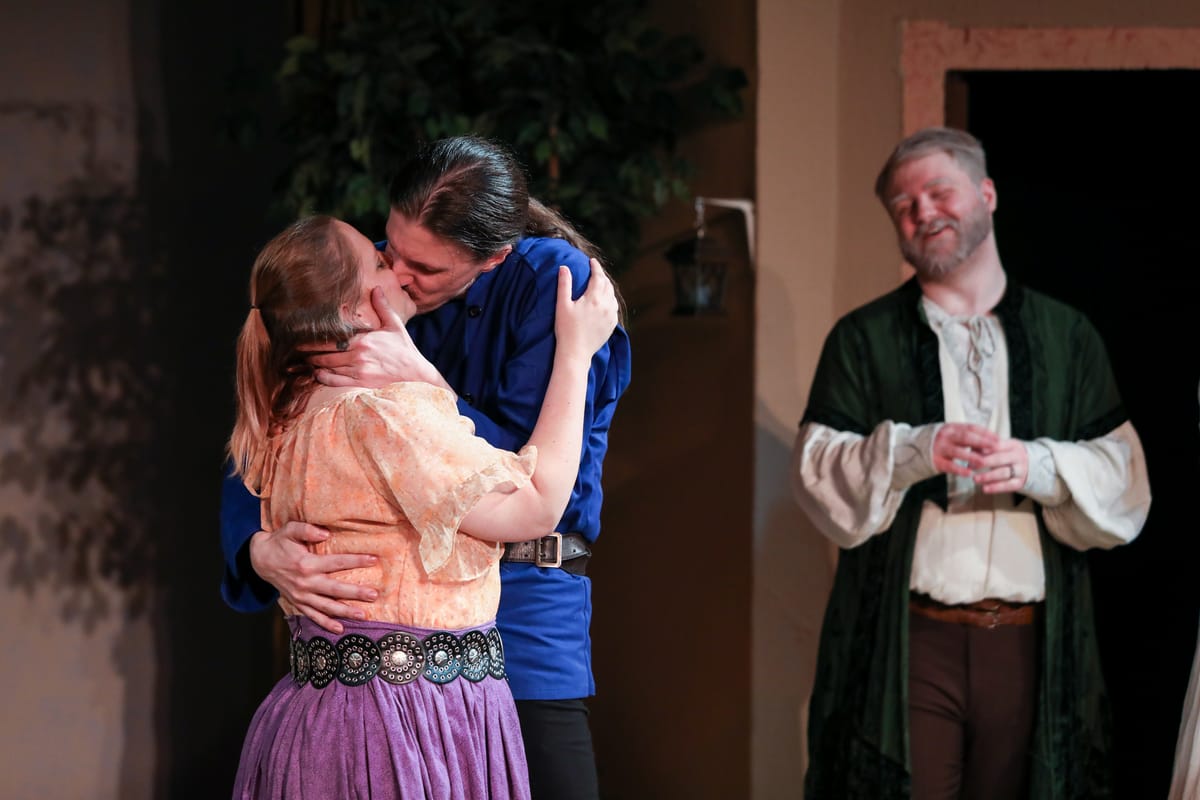
A crisp, swiftly moving yet unrushed production of one of Shakespeare’s most beloved comedies runs through August at Kechi Playhouse, and it is well worth the extra few minutes needed to get there. This adaptation by owner and director Misty Maynard (with generous input from cast members: “If I would break a line of verse and ruin the meter, I was told about it”), snips off about 30 minutes from the runtime, excises five of its 19 characters, and spices up action with creative choreography, one involving a shepherd’s crook.
Off-stage drama has challenged the 2025 season, now roughly halfway through its five-show lineup, with ill-timed construction work that coincides with both the theater’s calendar and its location at 61st and Oliver. (Update: Construction at the intersection has concluded.)
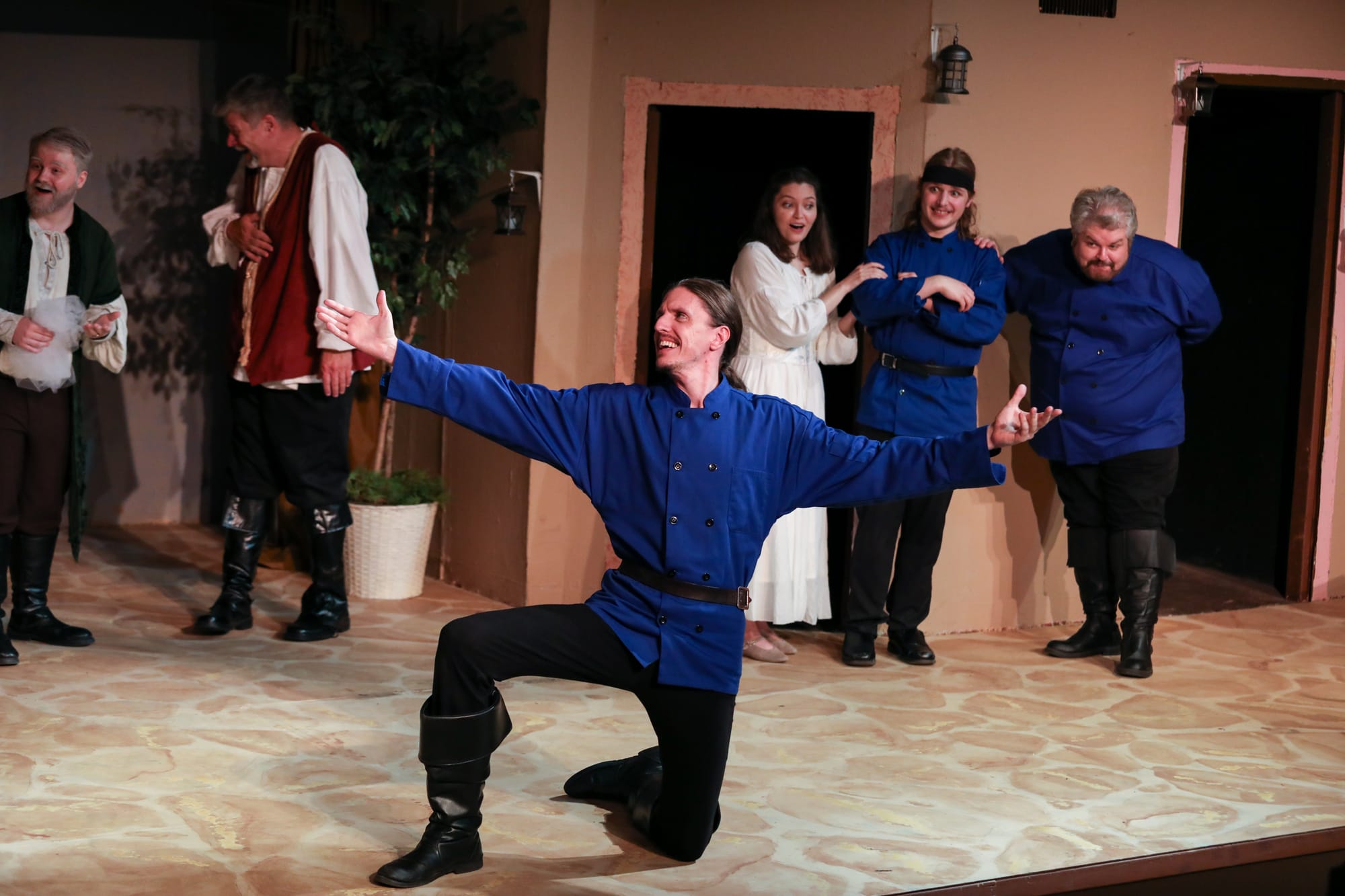
Audiences for the Sunday matinee on opening weekend had front-row seats to additional drama — and theater at its essence — with Maynard’s curtain announcement that a member of the cast had gone to the ER that morning. A mad scramble to find a Wichita actor who had played his role ensued, and Dan Schuster was hustled out of church, handed a script, and tutored on the staging and dance steps a couple hours before curtain time. He had last played the role of Don Pedro, the Prince of Aragon about a decade ago, but his integration was seamless, with a performance panache matching his colleagues.
“Much Ado” tells the story of love found, avoided, thwarted, and ultimately (because this is a comedy) resolved, with happiness and dancing at curtain’s close. First of its two sets of lovers are Benedick (Joseph Ross) and Beatrice (Erin Polewski), far more palatable versions of Kate and Petruchio of Shakespeare’s “The Taming of the Shrew” (and its musical adaptation “Kiss Me, Kate”). The former is in service to Don Pedro (Schuster standing in; Ben Smith originally cast), and the latter is the niece of nobleman Leonato (Sky Duncan). Both the sharp-witted Benedick and Beatrice enjoy verbal jousting, pretending shared loathing when any idiot can see they’re madly in love. (Unlike Petruchio and, for that matter, most of Shakespeare’s men, Benedick is a relatively enlightened man. When, for example, a woman claims a man is lying, he believes the woman.)

The second pair are Benedick’s friend Claudio (Nick Dreier) and Hero (an endearing Shannon Ciccarello), Beatrice’s beloved cousin and Leonato’s daughter. Their love-at-first-sight romance is sullied when Don John (Anthony Larkin-Valdez), the prince’s bastard brother with a castle-sized chip on his shoulder, decides to engage his servants Conrade (Matt Neises) and Borachio (Robert Brining) in a deception that will spoil both Hero’s reputation and, consequently, her wedding. Borachio has an ongoing thing with Margaret (Kelsi Harris), in service to Hero. So, one night, the team draws Margaret out onto Hero’s balcony after arranging to have Claudio present to witness who he believes to be Hero canoodling with Borachio. Claudio waits until the wedding to accuse Hero of being a fallen woman and reject her in the most humiliating way he can manage.
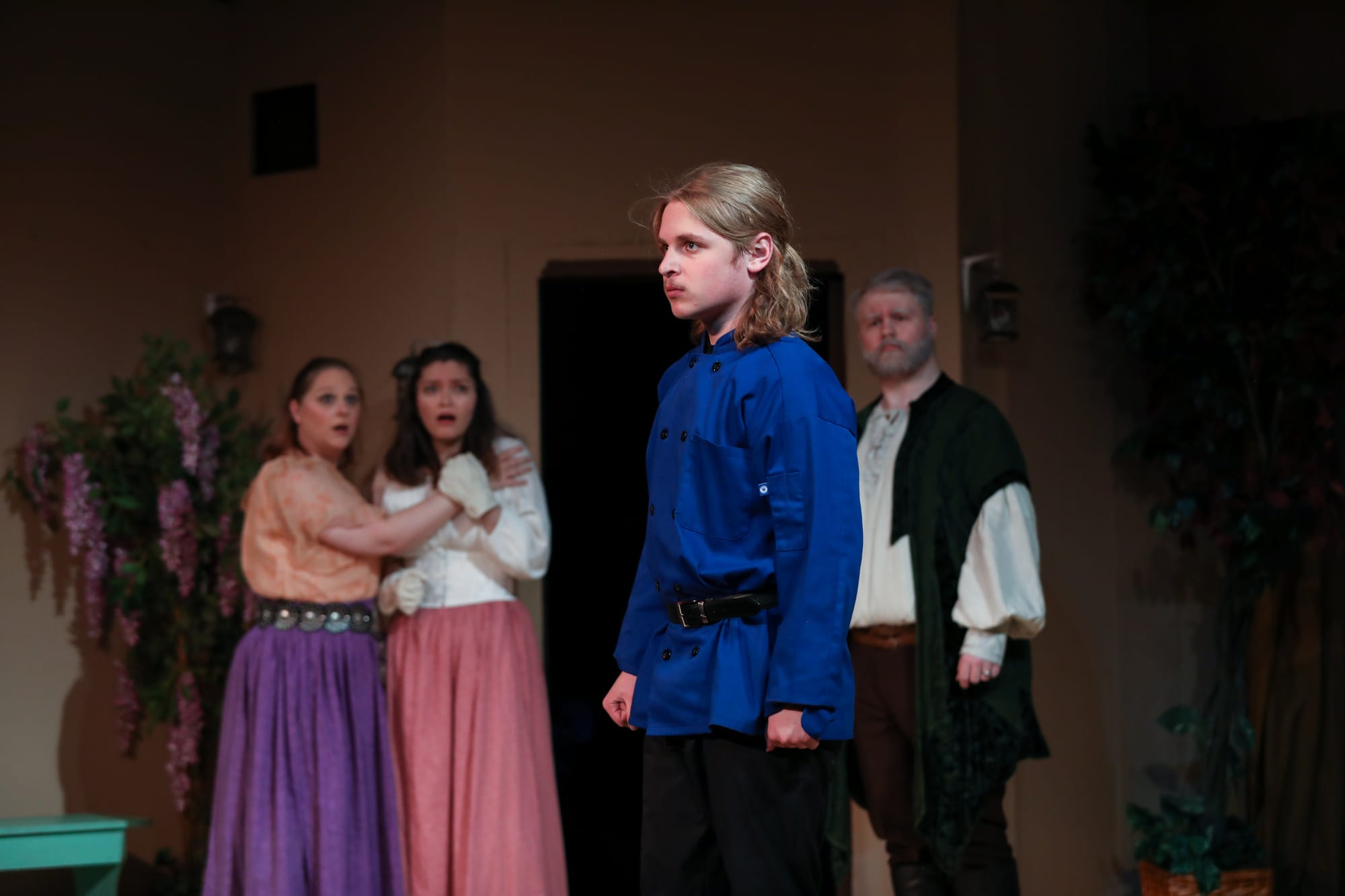
This is actually the second of the play’s many deceptions; Claudio initially woos Hero by having the prince pretend to be him at a masked ball, providing the handy pretense for an early, very pretty dance scene. Beatrice and Benedick are also both deceived by their friends when they arrange for each to “overhear” conversations about how madly in love with the other they are. Each member of the otherwise smart pair is gobsmacked to learn of the other’s devotion, and each admits to themselves — finally — of their love for the other.
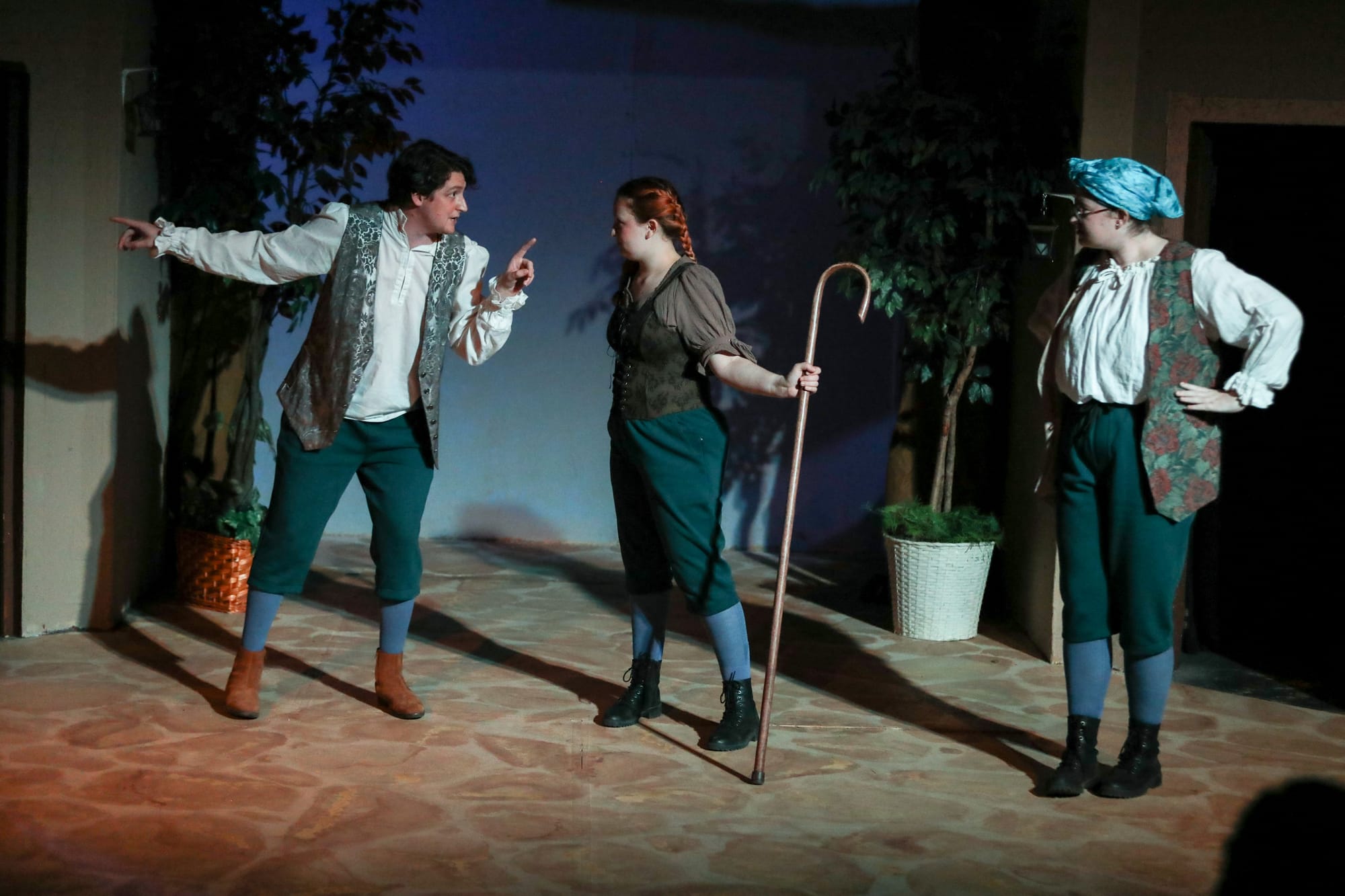
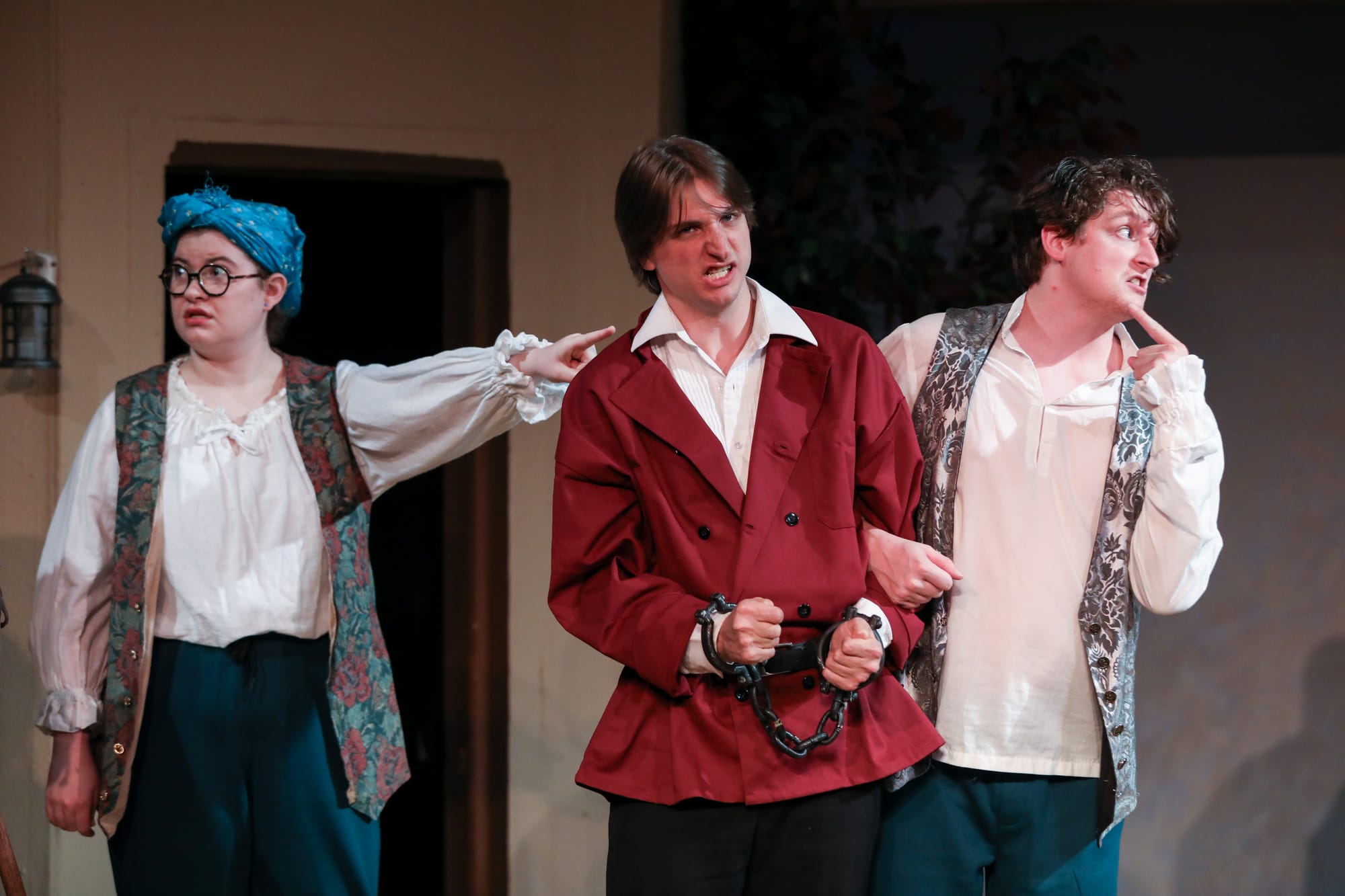
Having accomplished his devious deed, Don John flees the country, while the other two troublemakers are watched, overheard (again), and ultimately captured by a buffoonish trio led by one of Shakespeare’s comical characters: Dogberry (Brayden Layman, with Mia Dennett as Verges and Emily Redfield as a charming Seacoal). Borachio’s confession puts things right with the lovers and they are promptly married along with — after more verbal horseplay — Beatrice and Benedick. Don John is captured and dragged home for punishment, and there’s just time enough left for one more dance.
The evening’s pleasures begins with the program, which describes the act settings thus:
Act 1: Returning soldiers cause trouble out of boredom.
Intermission
Act 2: Lives fracture, but eventually straighten out.
Our free email newsletter is like having a friend who always knows what's happening
Get the scoop on Wichita’s arts & culture scene: events, news, artist opportunities, and more. Free, weekly & worth your while.
No spam. Unsubscribe anytime.
The very first visual cuts right to the gist of the play’s love story, with two women miming chatting, smiling — and pointing up to the moon. They stand on a handsome set (constructed by Richard Shultz and painted by Hanson Long and Storme Maynard) and wear what prove to be universally terrific costumes throughout the show (credited to the “cast and crew”) that pick up colors according to relationships: Don John, Borachio, Conrade, and Leonato wear bright red jackets, while Don Pedro, Benedick, and Claudio wear equally vivid blue. In later scenes, Hero’s dress will pick up the color and texture of Claudio’s shirt; and so on. The scene in which Beatrice “overhears” is softly feminine, placing the women on both sides of a clothesline on which hang linens that mirror their own clothing. After she learns of Benedick’s “love” for her and is left alone to ponder this new idea, Beatrice pulls the linen close like a protective shield — or a sheet suggesting lovemaking. Colorful masks (uncredited) are as varied as they are creative. Benedick’s in particular sports a long, skinny nose that (to be indelicate) rather parrots the actor’s own.
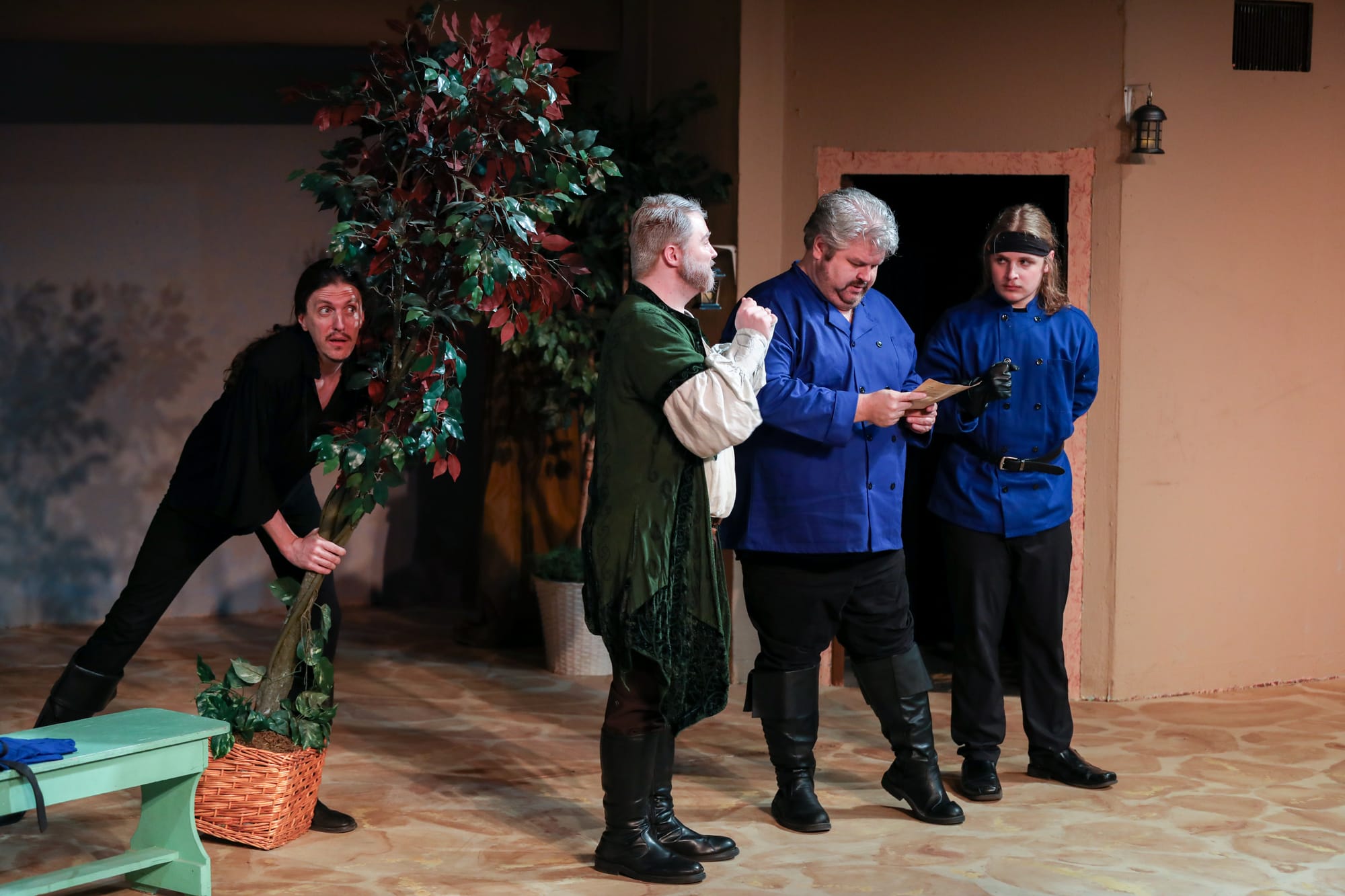
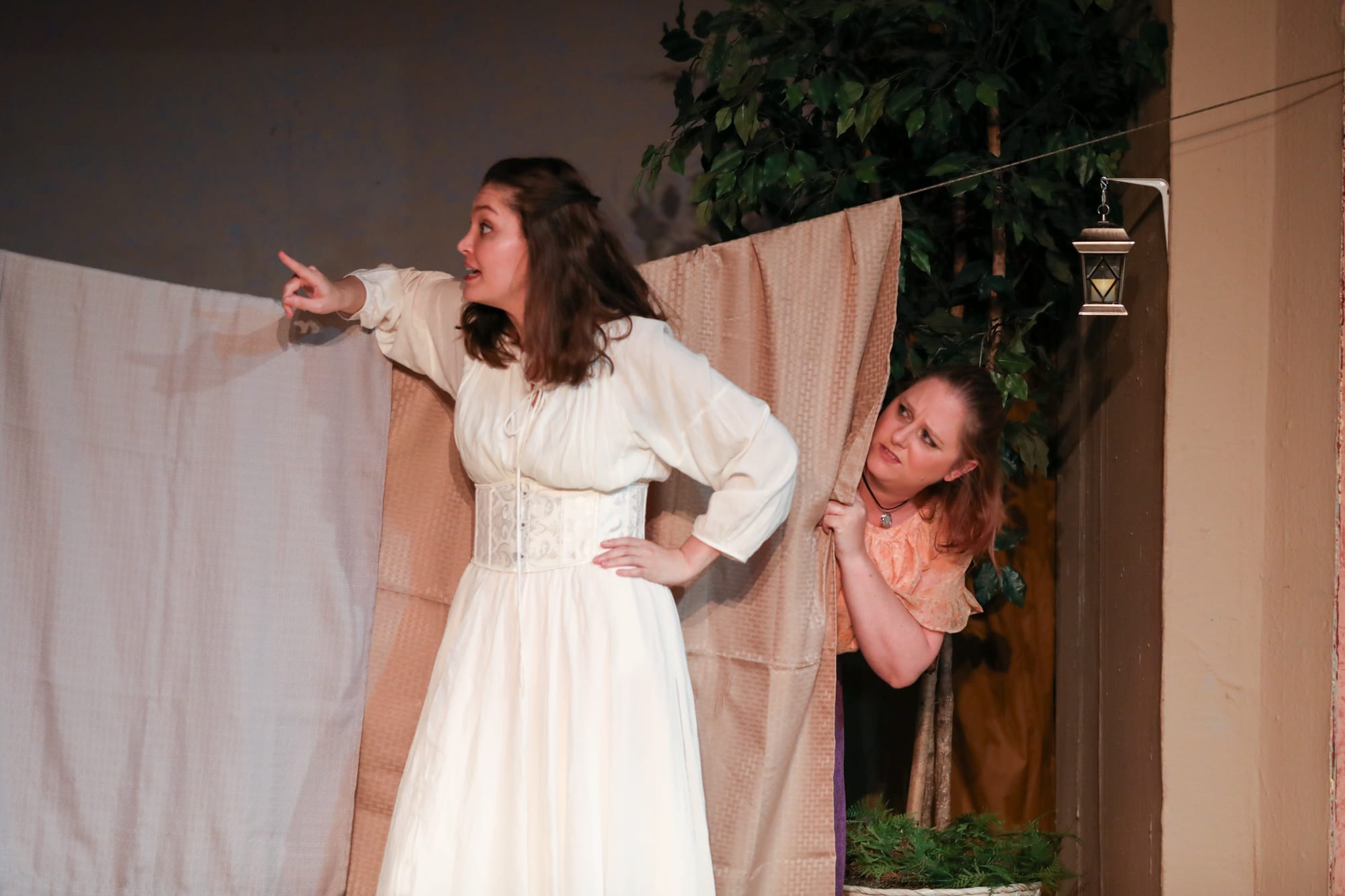
The play sets the game afoot within 15 minutes with its first deceit: the masks and role-playing. By this early point, we’ve already seen Beatrice and Benedick go at it: “I wonder that you will still be talking, Signor Benedick. Nobody marks you,” Polewski proclaims in one of many terrific bon mots, each full-bodied without a hint of meanness. Beatrice’s wit via Polewski’s robust performance comes at nobody else’s expense except Benedick’s (and he loves it). Even at her most angry — “Oh that I were a man!” she cries when her friend’s heart has been broken, and, again, when she coldly orders Benedick to kill his friend — her Beatrice is sweet, warm-hearted, and thoroughly likeable.
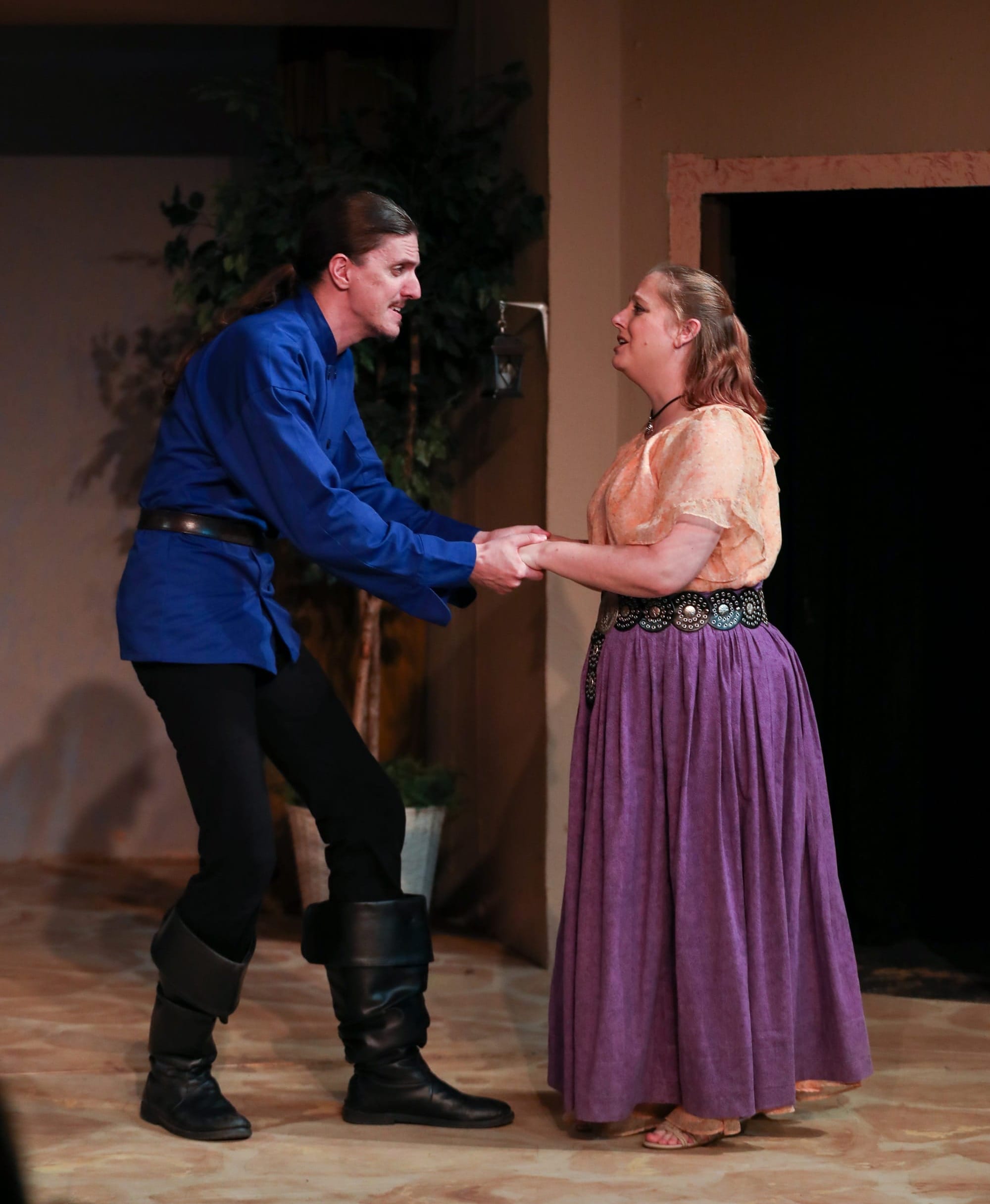
Benedick’s wit buzzes through Ross’s comic timing and precise diction (heavy on the ending “t”s), so sharply crisp as to be almost clichéd — one expects him to go bouncing off with Bugs Bunny for more mischief-making. He uses his tall, lean body to full advantage, perfectly happy to play the fool if it will bring an extra laugh. Indeed, his interpretive choice with Benedick leans heavily to clownish, as opposed to sly or heady, but given his physique and acting strengths, as well as the play’s wildly flexible armature, it’s absolutely suitable.
Dreier’s big, round, lovesick eyes upon Claudio’s first sight of his Hero seals the deal for his irresistible performance, played particularly well while in love (if perhaps somewhat less convincingly when angry), and in comfortable rapport with his (much taller) friend. Layman and Larkin-Valdez, while sturdy and suitable, attack their challenging characters as Dogberry and Don John at such peak volume that they leave little room to go from there.
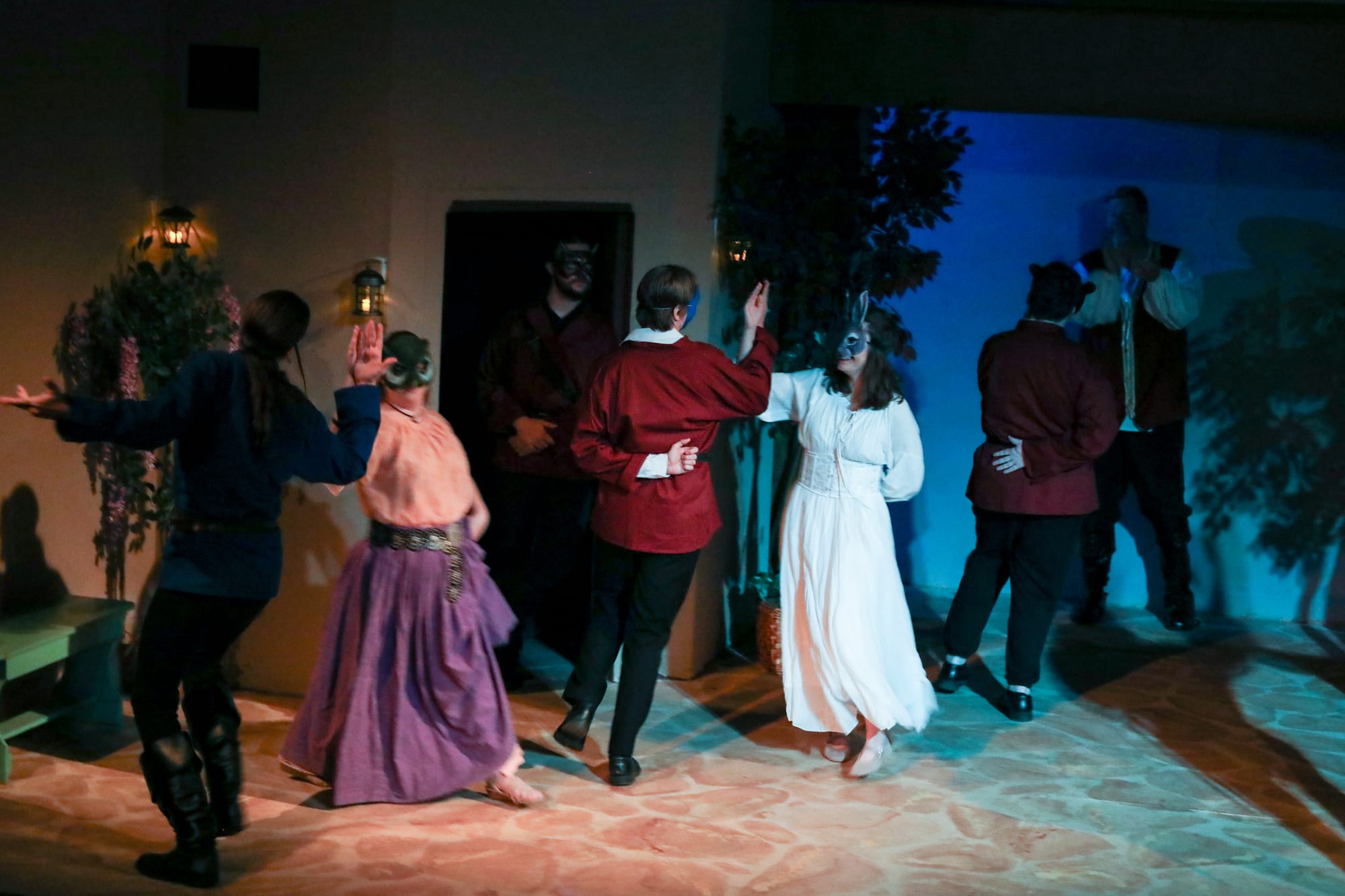
Joseph Ross is behind the show’s terrific choreography as well, performed mightily whether in battle or dance. Especially notable is the wild struggle and capture of the bad guys by Redfield, as (perhaps) the least idiotic of the three idiotic watch people, swinging her curved staff in both offense and defense and challenging the Keystone Cops on the laugh meter. Redfield also sports a delightfully colorful shepherd’s costume, complete with double braids framing her impish face.
Shultz as Antonio and Harris as Margaret put in winning performances — the former instilling depth and an “I’m the grown-up here” sensibility into his role, and the latter stopping just short of upstaging her fellows in her comic scenes. Sky Duncan, Ciccarello, Schuster, and Dennett also give strong performances, and Neises and Brining are suitable comic foils.
The Details
Kechi Playhouse presents “Much Ado About Nothing”
August 1–24, 2025, at Kechi Playhouse, 100 E. Kechi Road in Kechi, Kansas
All shows are at 8 p.m. Friday-Saturday and 2:30 p.m. on Sundays.
$17 general admission tickets on Fridays and Saturdays and $16 on Sundays. Call 316-744-2152 to make reservations.
Remaining productions this season:
- “Pygmalion (Radio Version),” September 5–28
- “A New Noir Comic Mystery” by Storme Maynard, October 3–26
Read more about Kechi Playhouse:
- In its 43rd season, Kechi Playhouse tempers passion with pragmatism
- A new, minimalist adaptation of 'Cyrano de Bergerac' is on stage at Kechi Playhouse
Anne Welsbacher writes plays, nonfiction, and book and theatre reviews. She can be found on Substack and Bluesky. She is the Performing Arts Editor for this publication. awelsbacher.com
❋ Derby man has the kind of voice that turns heads — and chairs
❋ Socializing while sober: how some Wichitans are cultivating alcohol-free communities
❋ As a small creative business closes, the owner mourns
❋ Painting through it: Autumn Noire on 20 years of making art
❋ How a guy from Wichita resurrected 'Dawn of the Dead'
❋ Bygone Friends University museum housed curious collections
Support Kansas arts writing
The SHOUT is a Wichita-based independent newsroom focused on artists living and working in Kansas. We're partly supported by the generosity of our readers, and every dollar we receive goes directly into the pocket of a contributing writer, editor, or photographer. Click here to support our work with a tax-deductible donation.

